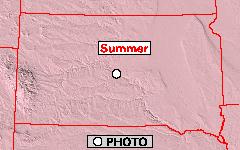As is the case with most of the Rails, Sora are often quite difficult to observe due to their preference for thick marshy vegetation. They are one of the most common of Rails. Unlike the long-billed Rails, their short bill prevents them from probing mudflats for small animals. Instead, they feed heavily on seeds, other vegetative matter, and insects.
Habitat: During the breeding season, Sora can be found in a wide variety of freshwater marshy habitats, including wetlands, river and pond edges, and damp meadows. They will inhabit saltwater marshes as well during the winter.
Diet: Feeds heavily on vegetative material, especially seeds and wild rice. Also feeds on aquatic insects, snails, small crustaceans, and spiders.
Nesting: June through August
Migrations: Summers throughout much of Canada and the northern two-thirds of the United States. Winters along U.S. coastlines, in the far southern portions of the U.S., and points south.
 Similar
Species: Virginia Rail,
Yellow Rail
Similar
Species: Virginia Rail,
Yellow Rail
Status: Generally widespread and common, but local declines have been noted due to loss of freshwater marshes.